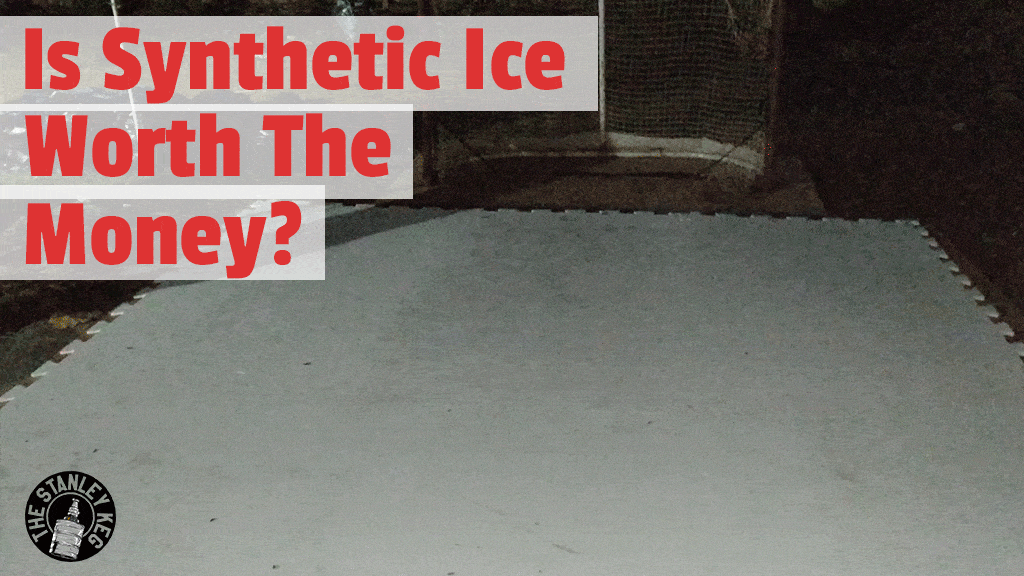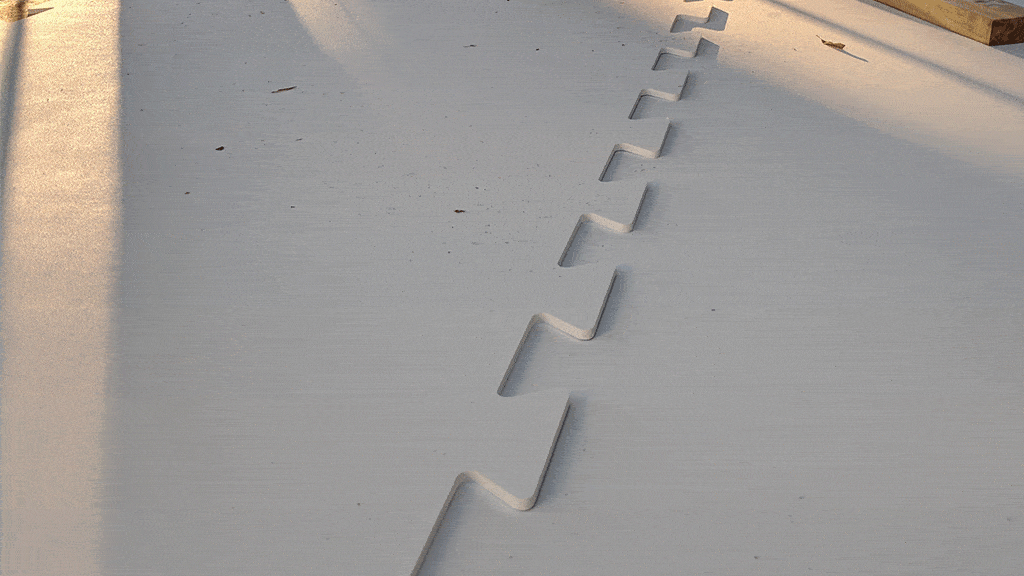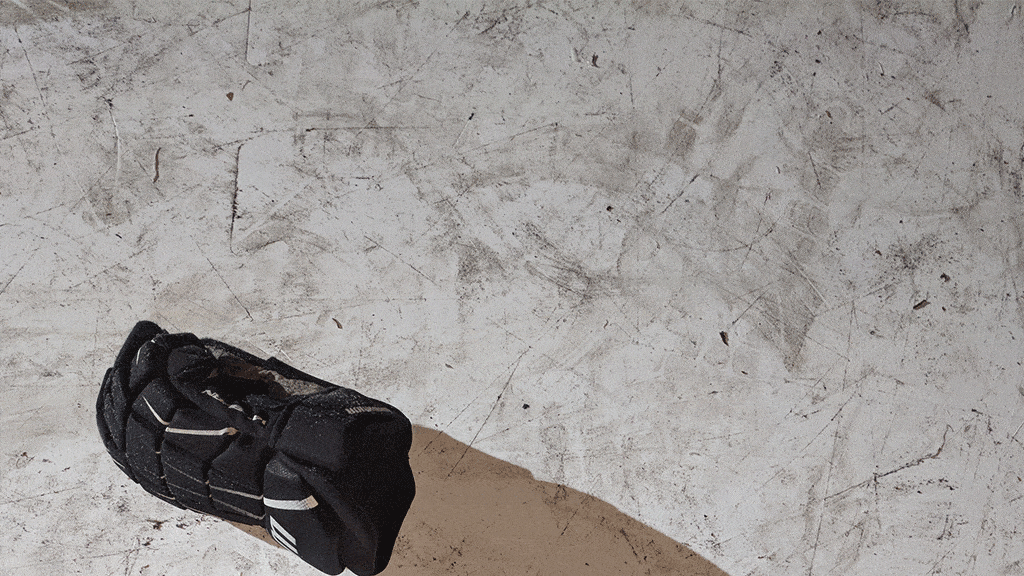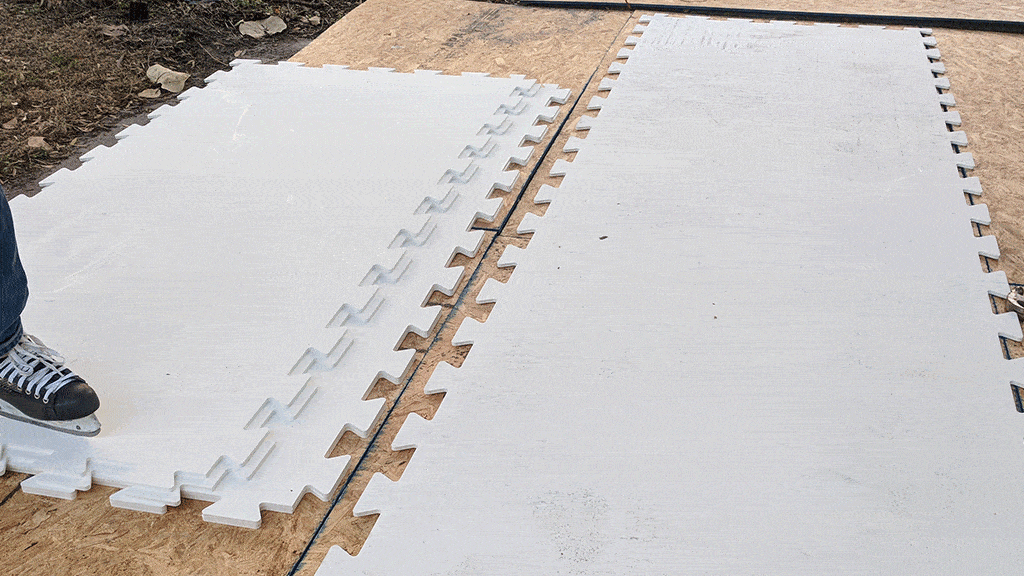
Wouldn’t it be great to have an ice rink in your backyard? That is not an option for all of us but there is synthetic ice. Could this be a good option?
Synthetic ice is a type of artificial ice made from different plastics that can be tough on skate blades and does not feel like real ice. It is a convenient way to practice your skills outside of a traditional rink but can be more expensive.Tiles have a lifespan of 3 to 7 years and on average, you can expect to spend about $15 per square foot for synthetic ice.
If you are thinking about buying synthetic ice for your home we will cover everything you need to know before purchasing so that you can feel confident.
Is Synthetic Ice Worth It?
Synthetic ice is a great tool for practicing your hockey skills while not at the rink however it is important to know that fake ice has a totally different feel than real ice and it will dull your skate blades more quickly.
To answer the question of whether synthetic ice is worth it or not will depend on what you are looking to get out of the tiles. If you want a space to practice stick handling and your shots while in your skates then I think yes, synthetic ice is worth it.
If you are wanting fake ice to practice your skating mechanics then I would say no, synthetic ice is not worth it because you will not get that real ice feel and you will need to spend a few hundred to thousands of dollars to get a space that is big enough to skate around freely and not feel constrained.
The cost of synthetic ice rinks will vary depending on the size that you are looking for. If you buy the 10-pack from Pure hockey, you will get 10, 18” x 18” tiles which is equal to a 15 x 15-foot section for $180.
Even in the description of the tiles, it says that you can expect to feel about 10 – 15% more resistance when compared to ice. This can be spun as a positive. Meaning that you can now use this as resistant training. This is true but I think you will find that a 15-foot by 15-foot space is a lot smaller than it sounds and you will need lots of these tiles in order to get the actual benefits of resistance training.
This added resistance will also most definitely put some wear and tear on your hockey skates. If you are planning on getting synthetic ice to practice I would highly suggest that you get an extra pair of really cheap skates to use as “burner skates”. You can expect to get these blades sharpened much more often. After I asked on synthetic ice twice my blades were pretty much useless when I speed onto real ice with them. I was slipping and sliding all over the place.
Skate sharpening is relatively cheap but when you have to do it frequently then the cost of that can quickly add up and should be factored into your decision when it comes down to buying synthetic ice or not.
Overall the biggest thing to consider when buying synthetic ice is how you plan on using it. Its a great tool for stick handling and shooting while on skates but it does not feel at like real ice.

How Long Does Synthetic Ice Last?
In general, synthetic ice rinks are expected to last between 3 and 7 years, depending on the thickness of the material and the level of maintenance it receives.
The lifespan of synthetic ice rinks can vary depending on the specific type of material used and the amount of use it receives. Thicker materials tend to be more durable and have a longer lifespan, but they may also be more expensive.
It’s important to carefully consider the long-term costs and maintenance requirements of synthetic ice when making a purchase.
here are several factors that can affect the lifespan of your synthetic ice:
Quality and durability of the material: Synthetic ice rinks are made from a variety of materials, and the quality and durability of these materials can vary. Thicker, higher-quality materials tend to be more durable and have a longer lifespan than thinner, lower-quality materials. One of the best materials for making synthetic ice rinks is VHMW-PE.
This material is often used in the manufacturing of synthetic ice rinks, as it is able to mimic the feel and performance of real ice while being more durable and resistant to damage. It is also resistant to UV light, making it suitable for use in outdoor rinks.
Amount of use: Obviously, synthetic ice rinks that are used more frequently may wear out more quickly than those that are used less often but do not be afraid to use the heck out of your rink. That is what it is there for.
Maintenance: Proper maintenance of synthetic ice can help to extend its lifespan. This may include cleaning the surface regularly, replacing damaged panels, and following any specific maintenance instructions provided by the manufacturer. We will dive into maintenance deeper later in this article.
Environmental conditions: Synthetic ice rinks may be affected by extreme temperatures, UV light, and other environmental factors. Rinks that are exposed to these conditions more frequently may have a shorter lifespan than those that are not.
Overall, it’s important to carefully consider the quality and durability of the synthetic ice material, as well as the expected amount of use, location of your ink (in the sun, shade, or indoors?), and maintenance requirements, when deciding on a synthetic ice rink.

What Maintenance Do You Need To Do To Synthetic Ice?
Maintenance on your synthetic ice tiles will vary depending on how much you use them. Basic maintenance involves keeping them clean.
Daily maintenance of your tiles looks like giving them a good sweep before using them just making sure there is no debris on the tiles.
Most manufacturers recommend cleaning your tiles with really basic items like a mop and water.
A foaming soap or cleaner is usually not recommended because they can leave residue on your tiles. This won’t affect the way they feel when skating but the residue left behind will attract more dirt and grime and could end up affecting the way the puck moves on the ice.
If you are having a hard time cleaning off set in dirt you can use a scrub brush with hot water. If this still isn’t working you can use a pressure washer if you have it.
Some people wish that their synthetic ice was a bit more slick than it is when it comes right out of the box. Hockey Shot actually sells a “glide polish” that you can apply to your tiles. I don’t know what the exact ingredients are in that polish but it is lemon-scented and lots of furnish polishes are also lemon-scented. I have a suspicion that hockey shots “glide polish” is actually lemon pledge branded in a different way for 3 times the price.
Lots of hockey players have shown that they have had good results by using dollar store furniture polish.
The only thing I would be worried about using these types of polishes is the residue it would leave behind on your synthetic ice tiles. If you wish to use these polishes to make your tiles more slick, I would recommend regularly cleaning your tiles with mild soap and brush.
How Much Does The Average Synthetic Ice Rink Cost?
The price of synthetic ice can vary significantly depending on the brand and the size of the panel. In general, you can expect to pay anywhere from $5 to $25 per square foot for synthetic ice. Here is a rough price range for some of the most popular brands of synthetic ice for hockey players:
- HockeyShot: $5-$15 per square foot
- XHockeyProducts: $10-$20 per square foot
- Glice: $15-$25 per square foot
- Can-Ice: $11 Per square foot
- Skate Anytime: $10 Per Square Foot
- D1: $11 Per Square Foot
Below is a table that will show you the cost if you wanted to cover an average one car garage, 2 car garage, and a bedroom. We used national averages for these spaces. A 1 car garage is estimated at 240 square feet. A 2 car garage varies quite a bit for square footage but we went right in the middle of all estimates and said 508 square feet. For the bedroom, we are taking an average American bedroom and we decided that people would probably use the smallest bedroom in their house for this and on average that is typically around 120 square feet.
| Band | Avg 1 Car Garage | Avg 2 Car Garage | Avg Bedroom |
| Hockey Shot | $1,200 – $3,600 | $2,540 – $7,620 | $600 – $1,800 |
| X Hockey Products | $2,400 – $4,800 | $5,080 – $10,160 | $1,200 – $2,400 |
| Glice | $3,600 – $6,000 | $7,620 – $12,700 | $1,800 – $3,00 |
| Can – Ice | $2,640 | $5,588 | $1,320 |
| Skate Anytime | $2,400 | $5,080 | $1,200 |
| D1 | $2,640 | $5,588 | $1,320 |
Keep in mind that these are just rough estimates and prices can vary based on the specific product and retailer. It is always a good idea to shop around and compare prices before making a purchase.
Each one of these brands is differentiated by the thickness of the tile, the material used, and how they interlock with each other.
We will dive deeper in the next paragraph about which ones we have used and think are the best on the market.
Best Synthetic Ice On The Market
I believe the best synthetic ice tiles on the market are from Xhoxkey products. They offer a wide range of different tiles to select from. You can get the cheapest consumer tile which is a lot like the other brand’s tiles but they also offer heavy-duty commercial-grade tiles.
Xhoxkey products synthetic ice offers much better glide than the other synthetic brands. On their site, they claim 30% – 40% less resistance when compared to other competitors.
Another reason why I have chosen X hockey products’ synthetic ice tiles as the best ones on the market is because of their unique locking system. They can lock together in a way that offers the smoothest seams. This is especially great for goalies because with other synthetic ice you may snag your pads on the seams if they are not interlocked absolutely perfect.
Like almost all tiles on the market, XHoxkey Products is also UV resistant which means you can expose them to the harsh sun and the elements that nature may throw at them.
The tiles that I have personally used were from the brand D1. They are a lot like the hockey shot tiles, the Skate anytime, and the Can-ice tiles. They lock together like puzzle pieces. They are all about the same thickness and that is ⅜ inch thick.
All of these synthetic ice tiles will make a mess. The tiles will leave plastic shavings all over your garage, room, or wherever you have been skating. So expect to deal with that.
With the higher priced commercial tiles from Xhoxkey products you will get a much thicker tile that will last much much longer. They are made to be used and abused by heavy traffic, for example, they can be used to make an outdoor skating rink for the public to skate on.
How Do You Install Synthetic Ice?

The most important part when installing your synthetic ice is making sure that your surface is level. If you lay ice on an unlevel surface your panels will not fit together properly.
Tools needed to install synthetic ice:
- Measuring Tape
- Gloves
- Rubber Mallet
Instructions
- If you have an already level surface like a garage floor or bedroom floor you just need to ensure that the area is clean and free of debris before you being interlocking your tiles.
- If you need to level the area you may need to buy fill dirt, or if your ground is really unlevel you may need to build a platform. If that is the case, you are in need of a build video.
- Once you have a level and clean surface you can begin measuring and laying your tiles. If you know you will need to cutt some tiles to fit I would recommend working from the center outward, that way you only have to cut one edge.
- If you purchased the most common tiles with puzzle-like pieces, you can simply line these edges up and use your rubber mallet to hammer them and lock them into place. If you purchased the Xhoxkey Product tiles, they have an H-Locking system that uses an H-shaped piece of metal or plastic to lock the tiles together.
Installing synthetic ice is pretty straightforward forward and you don’t really need any special tools. I would definitely recommend using gloves to carry all of these tiles. The edges can be sharp and the tiles are heavy. I found it very easy to cut myself when moving these thigns around.
Everything you need to know about Synthetic Ice For Hockey Players
The most important thing to know before buying synthetic ice is that it feels nothing like real ice. There is no replacement for real ice. However, it is a great training tool. Synthetic ice offers a lot more resistance which can help your endurance and strength when skating.
Synthetic ice is great to practice your stick handling, and shooting skills while on your skates. So not expect to get a lot of real-world edge work with synthetic ice.
Depending on the brand, you can expect to spend from anywhere between $5 per square foot all the way up to $25 per square foot.
All of the tiles are relatively similar but I think XHockey Products synthetic ice stands out from the crowd.
Most synthetic ice tiles require very little maintenance besides keeping them clean.
Installation for hockey tiles is also a straightforward process with the most important thing being a level ground.
I hope you got all the info you needed from this article and you feel a little more informed before you make a decision on whether or not you should purchase synthetic ice if you are an adult league hockey player.
